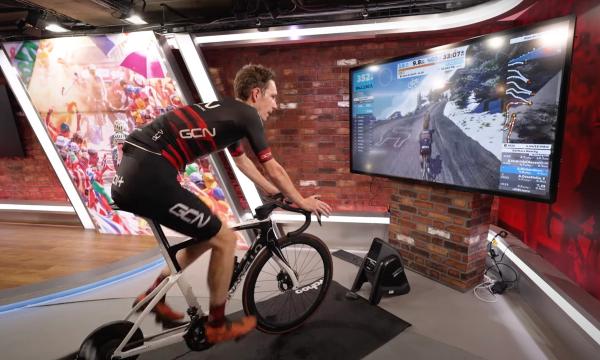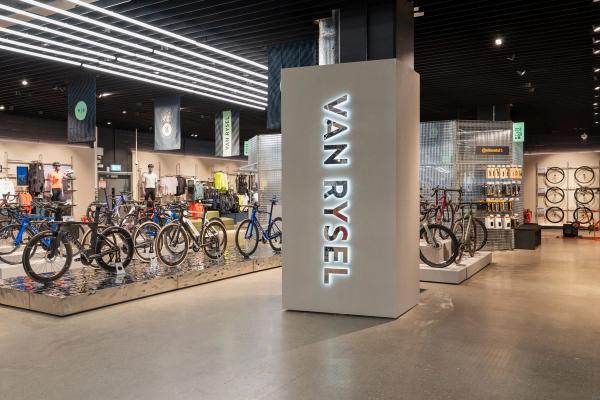Power meter connection problems and replacing brake fluid – GCN Tech Clinic
Your burning bike tech and maintenance questions are answered by the GCN crew
Alex Hunt
Junior Tech Writer
Alex Paton and Ollie Bridgewood return to the tech clinic this week to look at some more of your cycling queries, including why you might want to fit a different size tyre to your front and rear wheel, and how to get a dual-sided power meter to properly connect to your bike computer.
We also have some interesting feedback from Zero Friction Cycling regarding last week’s question on waxed chains and rusting, so make sure to check out the video for more on that.
How do I know when I need to replace my hydraulic brake fluid?
Unlike brake pads and disc rotors, the hydraulic fluid that is used to actuate the brakes is not as easy to monitor. The most important thing is to ensure that your brakes are performing as they should be. If you find that your brakes are spongy and don’t offer the power that they once did, it might be time to give them a full bleed and replace the fluid.
Exactly how often this will need to be done depends on a lot of factors such as the humidity and conditions that the bike is ridden and stored in, and the quality of your hoses and connections. Unless you have any reason to give the system a full bleed ahead of schedule, it would make sense to roll this into part of an annual maintenance overhaul.
Is there a drawback to using a tubeless tyre with a TPU tube?
Using a tubeless tyre with a TPU tube will act the same way as using a regular tyre with a TPU tube. The puncture protection that a tubeless system provides comes from the tubeless sealant rather than the tyre itself. This means that any debris that punctures the tyre and makes it through to the tube will still cause a puncture that will need repairing.
If you want the added protection that a tubeless system can offer, there is no way around needing to add tubeless sealant. Although this can be messy, using a sealant that can be injected through the valve and investing in some tubeless sealant cleaner can make the job far less messy.
What is the science behind fitting a wider tyre to the rear wheel and a narrower one on the front?
This boils down to a few different elements. Firstly the front of the bike is the most important area of the bike in regards to aerodynamics. As it’s the area the wind hits first, the cleaner and more streamlined the front end is, the bigger the potential savings can be. This is why a slightly narrower profile tyre can be beneficial at the front as it reduces the frontal area a little bit.
At the rear, where the air has already been distributed by other things and the airflow is considered ‘dirty’, there is less impact in having a wider tyre fitted. Therefore, to optimise rolling resistance and bring a bit more comfort, some people choose to use a wider tyre on the rear. Given that most of the rider’s weight sits on the rear wheel, it makes sense to have a bigger volume rear tyre, and it might even reduce the likelihood of punctures.
My bike computer will only connect to the left or right power meter on my bike but not both at the same time, how can I get it to connect to both?
This is not all that uncommon and can be down to the power meter itself and its origins. A lot of dual-sided power meters are also available as a single-sided option that can be upgraded to a dual-sided unit later. This means that the computer will see both meters as individual units and will look to connect to one of them.
To solve this there is usually a way of connecting both the left and right power meters together using the power meter manufacturer’s mobile app. This should then make the power meter discoverable as a single unit. It is also worth checking for firmware updates for both the bike computer and the power meter.
I am looking to fit TPU inner tubes in my Continental GP5000s 28mm tyres. How do I choose between a tube that is for 23-28mm and 28-35mm?
There is almost no difference between the two choices here, if the tube is rated for 28mm then either will work perfectly fine. You might find that the larger tube has a little more puncture resistance as it will not be stretched as much. If you use wider 30/32mm tyres in the winter then it would make sense to fit the larger ones as these can be used across a more usable range.
I have a cheap alloy bike that feels like it bends when I move it side to side out of the saddle. Is it just the wheels or is it the frame as well? What can I do to improve this?
The likelihood is that if it is an entry-level alloy bike it will be a combination of both the wheels and the frame. The cheaper materials do not have the same rigidity as the more premium alloys or carbon fibre. One of the best ways to improve the feel of your ride is to upgrade the wheels. A good pair of alloy wheels will be considerably stiffer than the ones you currently have and will immediately improve the feel of your bike.
Carbon is a far stiffer material, and the difference between carbon and alloy is obvious out on the road. However, the upgrade can be very costly. We would suggest upgrading your wheels to something a bit stiffer and riding these for a while. Investing in a completely new bike is no small financial investment and can be delayed with a component upgrade instead.
Do you have a tech question you want answered? You can leave it under the comments of this YouTube video or in the comments section at the bottom of this article.









.jpg?w=600&auto=format)

